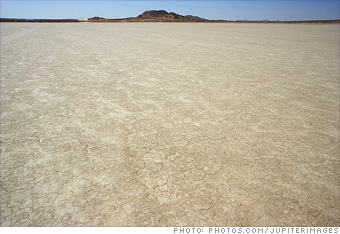
How it works: This audacious plan would cover the world's great deserts with white plastic sheeting, like a tarp but thicker, in an attempt to reflect more of the sun's rays back into space.
This wouldn't take place on sand dunes or in deserts like those in the American Southwest that have lots of plants, but rather the vast barren stretches of the Sahara, the Gobi, or the Arabian Peninsula. Some have also talked about doing this over the ocean, although specifics on that idea are in short supply.
The big problem: Cost. In order to reflect enough light to balance increasing carbon emissions, an area the size of Missouri would need to be covered each year. That would cost an estimated $500 billion annually, said Alvia Gaskill, president of the consulting firm Environmental Reference Materials who has done some calculations on the idea.
There's also the issue of space. It could only be carried out for 40-60 years before all the deserts were covered.
NEXT: Biochar
